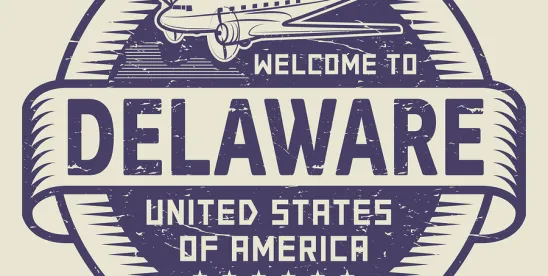Effective August 1, 2018, Delaware’s limited liability company act was amended to add new Section 18-217 (the “Amendment”). This Amendment permits a Delaware limited liability company (an “LLC”) to divide into two or more LLCs. In order to do so, the original (or dividing) LLC must adopt a plan of division (a “Plan”), which does not need to be made public, and file a Certificate of Division with the Delaware Secretary of State.
Under the Plan, the assets and rights, as well as the debts and liabilities of the dividing company, are allocated among the divided (or resulting) LLCs according to the Plan. The dividing LLC may continue in existence or be dissolved. Absent a court determination that the Plan constituted a fraudulent transfer, each resulting LLC is responsible only for those debts and liabilities allocated to it under the Plan and only owns those assets allocated to it under the Plan. By the Amendment, any lien on property of a dividing LLC shall be preserved if that property is allocated to a resulting LLC, but unless the related debt is also allocated to that resulting LLC, the debt becomes non–recourse to the resulting LLC that owns the collateral asset.
The Amendment added a safe harbor provision for any Delaware LLC that entered into an agreement before August 1, 2018 (a “Pre-Existing Agreement”). For any Pre-Existing Agreement (such as a loan agreement or a guaranty) that restricts, prohibits or conditions a merger or consolidation or a transfer of assets, the Amendment provides that such restriction, prohibition or condition shall apply to a division as if it were a merger, consolidation or asset transfer.
You may be thinking that your current loan documents already include restrictions or prohibitions on mergers, reorganizations, consolidations, and transfers of all or substantially all assets (each as “Transfer Restriction”) and that these Transfer Restriction covenants should be sufficient to protect your bank from any division of a borrower or guarantor (each an “obligor”). However, given the way the Amendment is written and the ingenuity of opposing counsel in disputes, your current Transfer Restriction may not be sufficient to protect your bank from a division of an obligor under state laws that permit them. In light of the Amendment (which has similar counterparts in Arizona, Texas and Pennsylvania), you should update your loan agreements and guarantees and your loan closing processes to better protect your bank.
- If you have negotiating leverage to do so, require your LLC borrower or guarantor to amend its organization documents (e.g., LLC operating agreement) to state that the obligor has no right, authority or power (1) to divide into two or more companies under any state’s laws or (2) to amend its organization documents regarding the prohibition against dividing into two or more companies. This would best protect the bank by making a prohibited division void under the organization documents.
- Amend the affirmative and negative covenants in your loan agreements and your guarantees to prohibit the obligor from dividing into two or more companies.
- For any Pre-Existing Agreement that you amend or renew after August 1, 2018, add affirmative and negative covenants to prohibit the obligor from dividing into two or more companies.
- If you learn that an obligor has divided into two or more other companies, secure a copy of the Plan of division and the state-filed Certificate of Division, and promptly file new UCC-1 financing statements against any resulting company that has been allocated any assets that are collateral for the obligations owed to your bank.
Delaware and other states will continue to update their company/LLC laws to add flexibility in managing company affairs. In doing so, it can create loopholes that adversely affect your standard loan documents. Staying vigilant in examining state law changes and updating your documents to address potential loopholes will help protect your bank against the consequences of these changes in state law.



 />i
/>i

